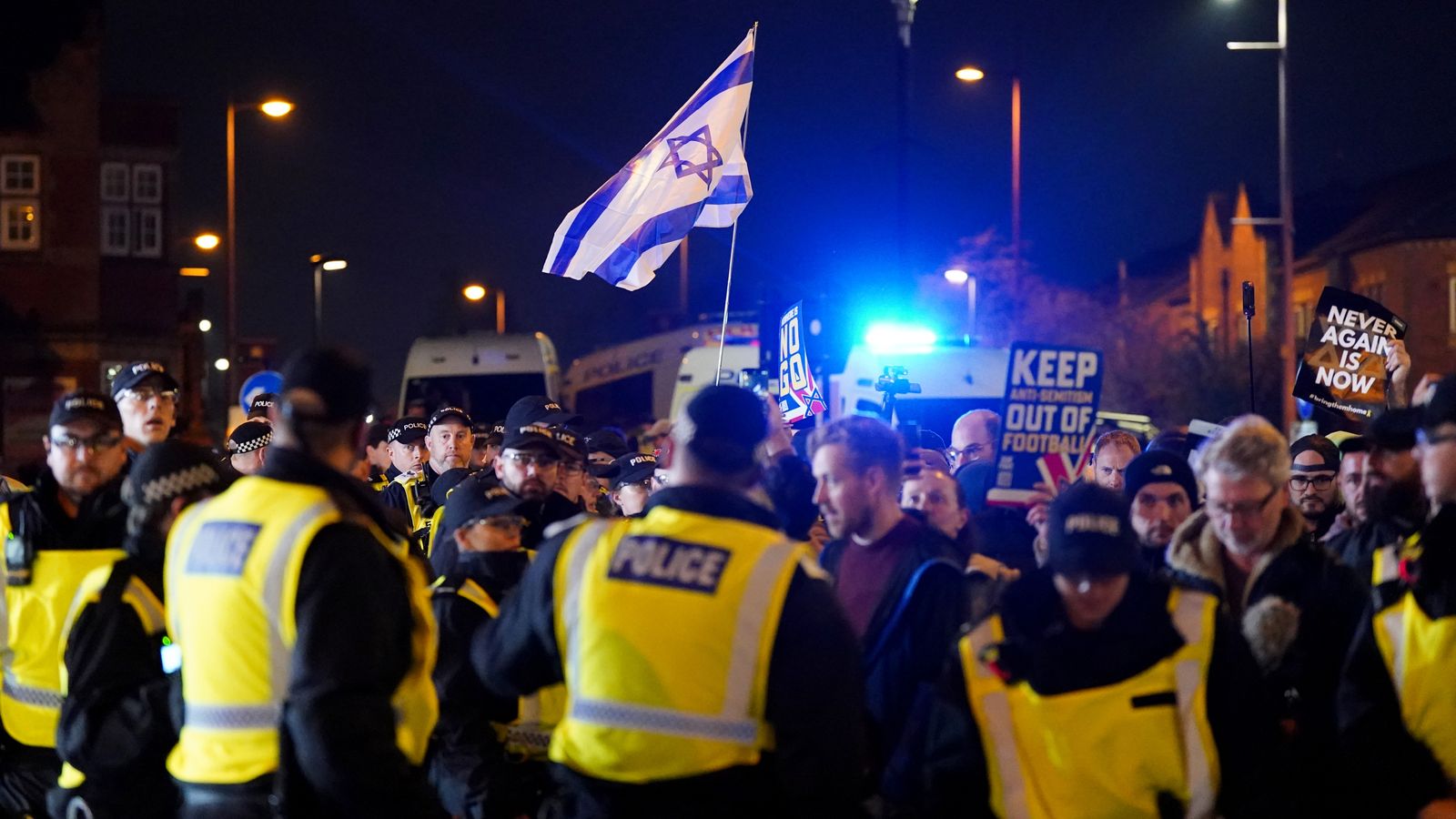There’s a lot to take into consideration when choosing the perfect tree (Picture: Getty Images/iStockphoto)
There’s nothing like the smell of a real Christmas tree to get you in the festive spirit.
Plus, they’re totally biodegradable. Win-win!
But how do you choose a Christmas tree to make sure it isn’t bald by the time you’re opening the presents?
Not only that, but how do you avoid one that has you hunting for a hacksaw just to get it through the front door?
Experts say there are eight things to look out for when choosing your Christmas tree.
So before you rush out and grab the biggest and greenest one, here are the key things you need to know.
How big should a Christmas tree be?
Biggest isn’t always best when it comes to choosing a Christmas tree (Picture: Reuters)
The trick is to get measuring before you even leave the house.
If you’re blessed with a giant hall and sweeping staircase, then that massive, bushy giant tree will be perfect.
If not, you’ll be struggling to see the telly for branches and needles.
Trees always look smaller until you get them home. We’ve all been there.
Measure the height and the width of the space, and don’t forget to allow space for the stand and tree topper – or you’ll end up bending the top over. Not a good look!
Should I choose a slim or bushy Christmas tree?
Open-plan areas generally do best with a bushy Christmas tree, as they add depth to the room, according to experts at Gardening Express.
If you’re planning to put the tree in a corner, or have a small room, think slim.
No matter how much you want that big, bushy Christmas tree, when you get it home and rip the netting off it’ll explode and take over the whole space.
Whatever you choose, pick one that isn’t already wrapped as allowing air to circulate around cut trees keeps them healthier – and you can have a good look at it.
Half-trees – basically a normal tree with the bottom half branches cut off – are a ‘thing’ right now, and a great option for corners.
OK, they look a bit weird. But they do save toddlers and pets from the inevitable, and leave lots of space for presents.
Brittle needles are a no-no when choosing a Christmas tree (Picture: Getty Images/Bloomberg Creative)
What colour should my Christmas tree be?
Green, obviously. But not too green.
Some savvy retailers have been known to paint trees to make them look more healthy, according to Gardening Express.
‘Don’t base your selection just on looks, as some trees that look green may be drying already,’ says founder Chris Bonnet.
Check the whole tree for any signs of grey or brown, dead needles, especially around the base.
Brown needles are a sign that the tree is far from healthy – and could look properly sad before the New Year.
What should the needles be like?
Soft. This is crucial.
Hard, brittle needles are a sure sign that the tree is way past its best.
Pinch the needles between your fingers and look for signs of snapping. If it happens, it’s not the tree for you.
Depending on the variety of tree, some needles are tougher than others. But the ‘snapping’ check always works.
Should my Christmas tree drop needles?
They all do, to a degree. But a fresh, healthy tree shouldn’t be shedding heaps of them.
Pick the tree up, hold a few inches off the floor and drop it.
If the floor is festooned with needles, you might want to choose another tree.
Another way to check is by running your hands through the branches, and tapping the trunk.
Some varieties – like the traditional Norway Spruce – do drop more easily than others. But if the tree is shedding bunches then it’s best avoided.
Christmas tree goals – though the cats would play havoc with those baubles (Picture: Getty Images)
What type of tree is best?
A quick rule of thumb is – if it’s got ‘fir’ in the name, it should have softer needles. ‘Spruce’ usually means harder needles but a stronger pine scent.
Norway Spruce is the classic Christmas tree. It looks and smells lovely but does drop needles like there’s no tomorrow. Expect a hefty mat of them under it – which can be a problem with toddlers and pets – and possible bald patches by New Year. Water well!
Nordmann Fir trees boomed in popularity a few years ago with their bigger, non-drop needles and thicker, spaced-out branches. They’re now the most popular UK tree and tend to be a bit more pricey but generally last well. A good choice if you’re keeping your tree up for a month or more.
Blue Spruce trees are arguably the prettiest, with a blue tinge to the needles, and they cope well with heavy decorations. The catch is they can be quite prickly and ooze a sticky resin. Take care with carpets!
Fraser Fir are huge in America and basically a non-drop version of the classic Norway Spruce. The branches can flop under heavy ornaments, so if you’re unleashing a lot of heavy family heirlooms or braving real glass, pick a sturdier type.
Is a real tree a climate-friendly choice?
Real trees are biodegradable, and it’s estimated they use up to ten times fewer materials and five times less energy than real trees.
Christmas tree farms also help soak up excess carbon dioxide in the atmosphere, and release oxygen.
The British Christmas Tree Growers Association represents sellers of up to eight million trees a year, and has a list of approved places to buy trees.
Giving your Christmas tree plenty of water is vital (Picture: Chris Ryan/SWNS)
What should I do when I get my tree home?
If possible saw a couple of inches off the base. Yes, it’s a right job, especially when you’ve just lugged the prickly thing home, and not many of us can be bothered, but your tree with thank you for it!
It’s the same principle as chopping the ends off a bunch of flowers – this allows water to penetrate into the tree more easily.
Position your Christmas tree near a socket for the lights unless you want to rig up a dangerous maze of extension cables.
Stand it in something that allows you to water it easily.
Then comes the fun part – decorate!
Check water levels every day, keep it hydrated and tah-dah! The perfect tree!
MORE : Christmas trees: Seven tips to protect your tree from your cat this year
MORE : Christmas films on streaming – our pick of the best festive flicks and where to watch them
Follow Metro across our social channels, on Facebook, Twitter and Instagram
Share your views in the comments below
Make sure your tree stays tip-top all through the festive season!





